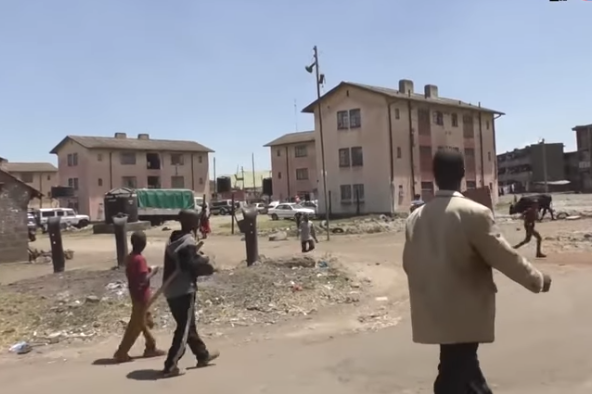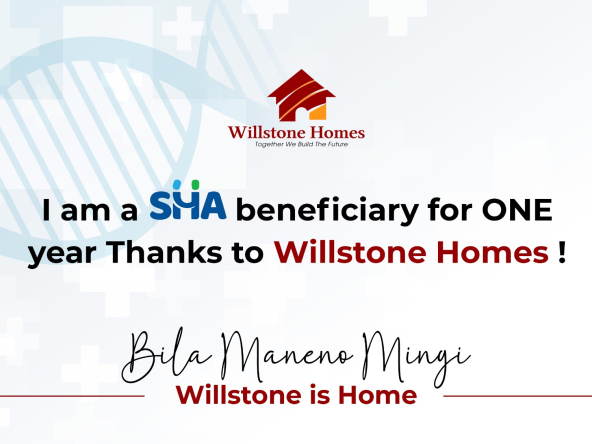In the post-pandemic world, the concept of office work has undergone a seismic shift — and Nairobi is not exempt. Across the globe, professionals are swapping glass towers for coffee shops, home offices, and sun-soaked balconies. But what’s more interesting in Kenya is where many of these professionals are choosing to work from: the outskirts.
Areas like Kitengela, Ngong, Ruiru, and Ruaka are fast emerging as ideal destinations for Kenya’s new mobile workforce. Powered by remote work real estate Nairobi, these satellite towns are transforming into viable bases for digital nomads and remote professionals seeking space, speed, and flexibility — without the chaos of central Nairobi.
A Growing Class of Remote Workers in Kenya
Since 2020, Kenya has seen a significant rise in the number of remote workers — from tech developers and consultants to creatives and small-scale entrepreneurs. This workforce is no longer tied to offices in Kilimani or Westlands. They want faster internet, quiet surroundings, affordable rentals, and a better quality of life.
And increasingly, they’re finding it in satellite towns.
What Digital Nomads Want — and Where They’re Finding It
The ideal housing for this demographic includes:
- Reliable high-speed internet
- Short-term or furnished rentals
- Quiet work-from-home environments
- Access to shared spaces or coworking hubs
- Affordable pricing
- Proximity to nature and outdoor activities
Developers in Ngong, Ruaka, and Kitengela are beginning to respond, creating co-living spaces Kenya and work-friendly apartments with built-in internet, communal lounges, solar backup, and even small boardrooms.
Startups like Ecoliv Spaces and Nomad Nest Kenya are piloting co-living models for digital nomads — properties that blend privacy with social interaction, and work-life balance with affordability.
Read Also: Why Luxury Real Estate Is Quietly Moving to Limuru and Tigoni — Away from Traditional Karen/Kitisuru
Tech Infrastructure Is the Backbone
None of this works without high-speed internet estates Kenya — and developers are starting to get it. In Kitengela and Athi River, some gated communities now offer 50-100 Mbps fiber connections as standard, marketed explicitly to remote workers.
Zuku, Safaricom, and JTL (Faiba) have expanded coverage in suburbs previously considered “semi-rural,” and tech-enabled homes are becoming more common.
The rise of tech-enabled housing Nairobi is also supported by property managers who integrate smart locks, energy monitoring apps, and 24/7 online concierge services — making satellite living both efficient and professional.
Why Satellite Towns Beat the City for Remote Workers
Here’s what Nairobi’s outskirts are offering that city suburbs increasingly cannot:
| Feature | Satellite Towns (Kitengela, Ngong) | City Suburbs (Kilimani, Westlands) |
|---|---|---|
| Rent for 2BR Furnished Apartment | KES 35,000 – 60,000 | KES 90,000 – 150,000 |
| Internet Availability | Expanding Rapidly | Saturated |
| Work-Life Quietness | High | Low |
| Outdoor Access | Nearby hills, farms | Urban parks, limited |
| Power Stability | Increasing solar backups | Overloaded grid |
Digital nomads are choosing furnished rentals satellite towns not just for cost, but for quality. The ability to take a call without matatu horns, or to walk a nature trail after work, is a growing asset.
Read Also: Solar-First Estates: How Power Unreliability Is Creating New Solar Gated Community Models
International Nomads Are Paying Attention Too
Kenya is slowly positioning itself as a remote work hub for Africa. International platforms like NomadList and Remote Year have flagged Nairobi as a rising city for digital workers — and this trend is bleeding into the satellite towns.
Some of the signs:
- Airbnb stays in Ruaka and Ruiru now often include “laptop-friendly workspace” in listings.
- Facebook groups like “Digital Nomads Nairobi” and “Remote Work Africa” have growing local membership.
- Coworking spaces like Kikao64 in Nakuru are inspiring similar models in Kiambu and Limuru.
With remote work becoming permanent for many international companies, Nairobi’s outskirts could become the continent’s Bali — minus the beaches, plus the bandwidth.
The Rise of Co-Living: Kenya’s Next Housing Boom?
Co-living spaces Kenya are still a nascent idea, but they’re gaining traction. Think of them as a hybrid between dorms and serviced apartments — spaces where young professionals rent private bedrooms with shared kitchens, living areas, cleaning services, and sometimes even social events.
These setups appeal to digital nomads and freelancers who want community without commitment. And with rising land prices in Nairobi proper, developers are now building such models more affordably in satellite areas like Ruaka and Kikuyu.
Challenges That Remain
Despite momentum, the road isn’t entirely smooth:
- Zoning regulations in many towns haven’t caught up with flexible housing models.
- Power reliability remains a concern in deeper parts of Kitengela or Ngong.
- Public transport options for car-free remote workers are still underdeveloped.
Still, many of these gaps are being filled by private sector innovation — solar-first estates, ride-hailing integration, and smart service delivery.
Nairobi’s Outskirts Could Lead Africa’s Remote Work Future
The rise of remote work real estate Nairobi is reshaping not just how people work — but where they live, socialize, and invest.
As digital nomads and remote workers demand more flexible, connected, and tranquil living spaces, Nairobi’s satellite towns are stepping up. With the right blend of infrastructure, affordability, and climate, places like Ngong, Kitengela, and Ruaka may soon be Africa’s answer to Chiang Mai or Lisbon.
For developers, that means a new customer base. For towns, it means a new economic engine. And for Kenya, it’s a chance to lead a global work revolution — right from the hills outside the city.
Read Also: Data Centers and Land Prices: How Tech Giants Are Quietly Changing Real Estate in Juja and Ruiru




